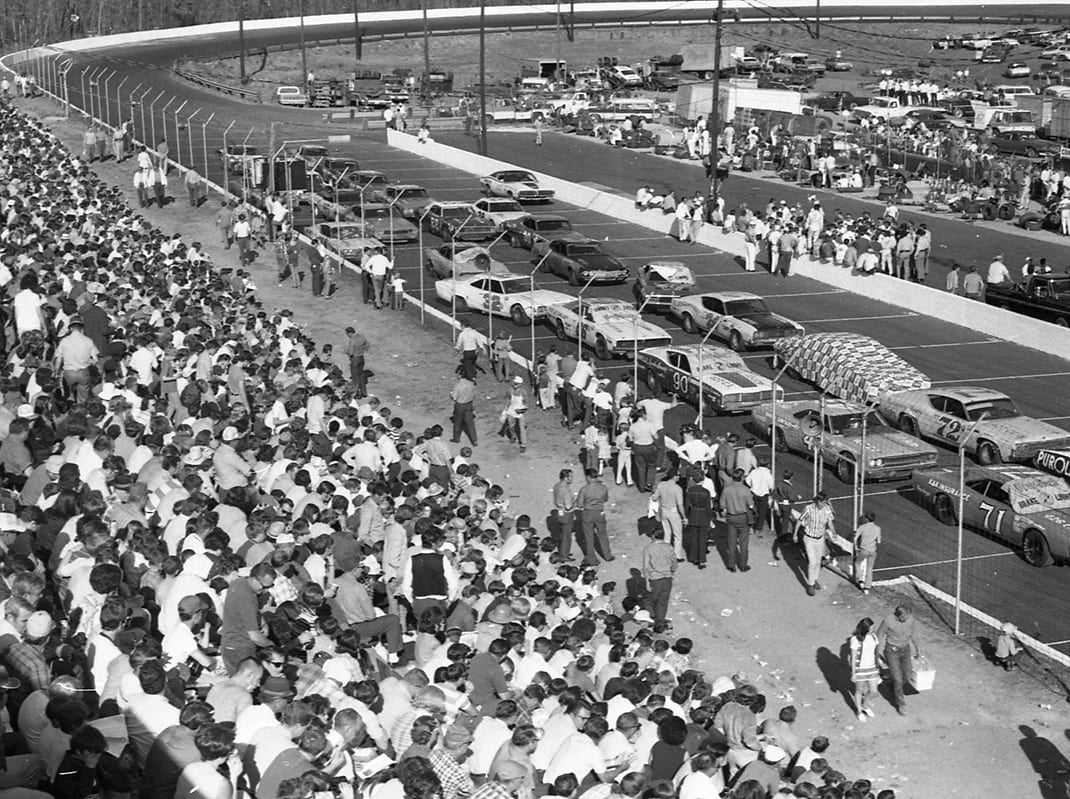Drivers and teams in NASCAR’s three national touring series have found themselves running the most rugged and demanding schedules of their careers thanks to the COVID-19 pandemic.
Midweek races have become the norm as the sanctioning body works to complete events that were previously postponed.
From June 19, 1949, through Dec. 12, 1971, NASCAR’s premier series raced at a variety of short tracks with as many as 62 races on the schedule in 1964.
For more than 20 years, drivers and their crews criss-crossed regions of the United States, racing wherever NASCAR Cup Series points were being awarded.
During the initial years of NASCAR’s existence, its founder, Bill France, was tasked with finding places for his new sanctioning body to race. At first, many of the trackowners were leery of France’s promises as promoters of that era would often abscond with the gate proceeds after races began, leaving no money for the track owners or racers.
France remedied the problem by standing by his word and paying purses at the end of races. To secure solid dates, France had to promise the best drivers would compete, which would keep fans coming to see the moonshine legends and their incredible on-track skills.
Throughout the 1950s, crew members transported cars on narrow two-lane highways to small venues across the South. In 1959, Daytona Int’l Speedway joined Darlington (S.C.) Raceway (built in 1950) and Raleigh (N.C.) Speedway (built in 1952) as the only superspeedways on the Cup Series tour. By 1960, Atlanta Motor Speedway and Charlotte Motor Speedway had been added to the schedule.
The already grueling season was made more difficult when pressure to win on high-profile superspeedways was applied by Chrysler and Ford executives.
NASCAR Hall of Fame inductee Waddell Wilson, an iconic engine builder with Holman Moody during the early 1960s, remembers the pressure that teams were under to win races and make headlines.
“Fireball Roberts was in a Ford Galaxie in 1964, but Holman Moody had built a Ford Fairlane and sent it to Daytona right after the 500,” Wilson said. “On Monday, John Holman had me stay and work on that car and Fireball drove it. I got to go home that night. The next week, they (Ford Motor Co. and their engineers) had us test at Bristol, they had us test at Atlanta and they wore us out. I will never forget how tired I was building engines and immediately leaving to go and test. We ended up winning the next seven races of 250 miles or longer with (Fred) Lorenzen. I remember reading a newspaper headline about how everyone would go to Darlington and chase Lorenzen and they did.”
Bobby Allison, the 1983 Cup Series champion, recalls how challenging the schedule was for young drivers attempting to make their mark on the sport.
“For example, I remember 1966 and I was 28 at the time,” Allison said. “We left Daytona after racing in the July Firecracker 400 there and went to Manassas, Va. Then, we went to Bridgehampton, N.Y., and raced at the road course there. Then, we’d take a ferry and go over to Connecticut and on to the outskirts of Boston. From there, we went to Oxford, Maine, where I won my first Cup Series race. That was on a Tuesday night.
“Then on Thursday night, we raced at Fonda, N.Y., on a famous half-mile dirt track there. Tiny Lund and J.T. Putney got into a wrecking contest and took me out with them. We worked from Thursday night, all day Friday and Friday night and all day Saturday up until time to load the car. We went to Islip on Long Island (N.Y.) and won the second Cup race of my career there.”
Click below to keep reading.
